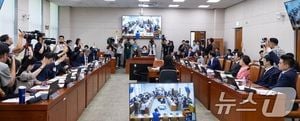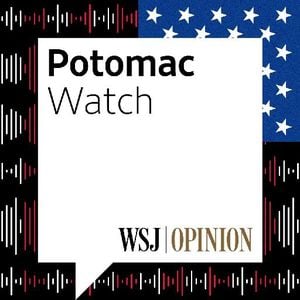The world of international trade is facing seismic shifts, particularly through the lens of the rising tensions between the U.S. and China. The relationship between these two economic giants has been under scrutiny for years, shifting with political tides, trade policies, and the global economy's constant evolution. With looming electoral changes and the specter of tariffs hanging over U.S.-China relations, the outcomes may significantly reshape global commerce.
One of the main points of contention lies within the high-stakes semiconductor market. Two years after the Biden administration enacted the CHIPS and Science Act, which earmarked $52 billion to revitalize U.S. semiconductor manufacturing, the U.S. also placed bans on several advanced chip technologies from being exported to China. This move aims to solidify the U.S.’s position in the microchip industry and restrict China’s advancement. So, how effective have these measures been?
The U.S. focuses on blocking China from accessing cutting-edge technology, particularly integrated circuits (ICs), which dominate the global semiconductor market. These chips fall primarily under three categories: logic chips used for data and processing, DRAM used extensively by computers and servers, and NAND flash memory, pivotal for storage solutions. Chinese manufacturers like Semiconductor Manufacturing International Corporation (SMIC) and ChangXin Memory Technologies (CXMT) have made significant advances but remain limited. They primarily target lower-end segments, which makes penetrating higher-end markets still quite challenging due to the complexity and technology limitations imposed by U.S. sanctions.
A significant benchmark is advanced photolithography systems used for manufacturing the most sophisticated chips, which are dominated by industries outside of China. For example, one Dutch company, ASML, produces the advanced systems needed for microchip creation. Chinese firms have none, limiting their capabilities significantly. While they succeed with certain segment offerings, like NAND flash memory—where recent developments are putting them on the same playing field as competitors like Samsung— they still face substantial hurdles within the advanced logic and DRAM chips categories.
This restrictive environment has catalyzed China’s ambition for self-sufficiency. There is now increasing reliance on domestic equipment manufacturers, leading to booming businesses like Naura Technology Group. Reports indicate localization rates for chip equipment have shot up from 21% to over 40% within just two years. Meanwhile, as part of their strategy, companies like Huawei and Cambricon Technologies are carving out their niches within AI processors, fueled by governmental support and local economies.
This dynamic sets the stage for the upcoming U.S. election, where policy shifts loom large. Former President Donald Trump has promised punishing tariffs of up to 60% on Chinese imports if re-elected, which would exacerbate tensions and impact markets. The impact of such tariffs could ripple through various sectors, including aerospace, with significant players like Boeing anticipating adverse effects. Tariffs could escalate prices for parts, complicate global supply chains, and disrupt existing business relationships. Analysts warn against proposals based on past experiences, where earlier tariffs sparked retaliation and led to significant job losses domestically.
On the flip side, should Kamala Harris win, we could see different tariffs sprinkled throughout, potentially less harsh but still focused on maintaining pressure through bans similar to those already seen against Chinese technology companies. This polarized split between potential administrations highlights the unpredictable nature of trade policies.
Current events directly demonstrate the ramifications of shifting policies and alliances. For example, the recent BRICS summit, which saw the participation of several new nations, indicates the willingness of major economies to step outside U.S. influence, showcasing the erosion of the once-unipolar power dynamic. By welcoming additional countries such as the UAE and Iran, BRICS sends ripples of economic challenge to the established order.
The summit underscored the importance of non-Western markets to countries like China, which remains unwaveringly committed to exporting goods. Although the BRICS nations may not replace the wealth found within North America and Europe, they offer alternative avenues for continued growth, especially as China faces persistent tariffs. Interestingly, both Trump and Harris share similar threads of discontent toward China, with tariffs serving as integral tools to gauge and maintain economic interactions.
Despite varying theories on global economic stability, one theme persists: the importance of turning inward. The rise of nationalist policies after decades of globalization has led to countries re-evaluohow their economic strategies are intertwining. Some argue this leads directly to deglobalization. At the heart of the matter lies the complex interplay of power among nations, markets responding to community discontent and the untenable consequences of unchecked globalization.
Economic anticipation continues to run rampant across industries as U.S.-China trade talks evolve. While some sectors stand to benefit from protective tariffs creating localized manufacturing, many companies, including Boeing, fear financial repercussions from rising costs of materials and supply chain restructures. Uncertainty stifles investment and growth, leading industries to hold their collective breath as they wait and watch possible outcomes.
Particularly within the aerospace sector, analysts express concern about potential layoffs and job losses. Tariffs could disrupt the global supply chain significantly, raising prices for domestic manufacturers. At the center of these anxieties, stakeholders ponder how policies can lead to economic instability, delaying technological advances and leading to forced adjustments across the board. If voters return Trump to the presidency, expectations of rapid upheaval could have devastating effects.
Political rhetoric and global posturing aside, economic realities don’t pause for elections. Companies operating both domestically and internationally are actively engaging with strategies to navigate the tumultuous waters of trade. Whether it’s adapting product lines, streamlining supply chains, or investing heavily to combat potential ramifications, the stakes are high.
What remains clear is the global economy is on the brink of transformation. Between shifting political powers, growing nationalist sentiments, and complex trade networks, nothing stays static for long. How the U.S. positions itself amid China’s rise and dealings during significant political changes will surely define not only short-term trade negotiations but the broader relationship between these two economic superpowers. Who will emerge from these tensions unscathed? Only time will tell as the world watches and waits.
The coming years will undoubtedly reshape the narrative of international trade as nations emerge from the shadows of past alliances and forge new paths amid growing uncertainty. Whatever the outcome, the stakes are high and the world economy is watching closely of how these tides turn.



